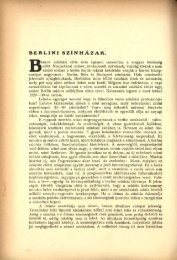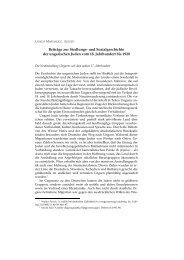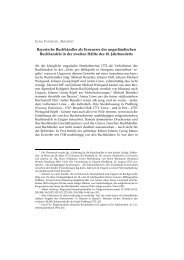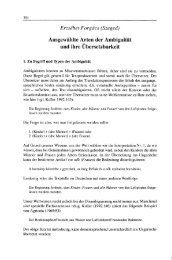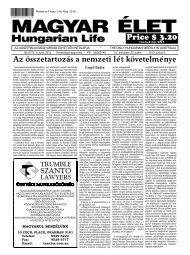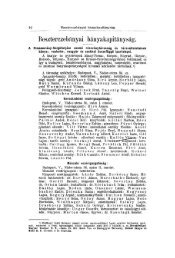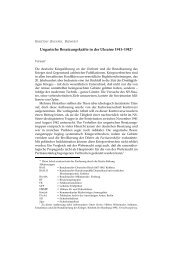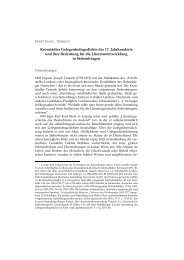hungarian studies - EPA - Országos Széchényi Könyvtár
hungarian studies - EPA - Országos Széchényi Könyvtár
hungarian studies - EPA - Országos Széchényi Könyvtár
You also want an ePaper? Increase the reach of your titles
YUMPU automatically turns print PDFs into web optimized ePapers that Google loves.
SOME QUESTIONS ON HUNGARIAN-SOVIET RELATIONS 27<br />
taken to the Soviet Union, from all taxes and duties. The Hungarians would supply<br />
housing and electricity for the Soviet workers. In return the USSR would<br />
provide scientific and technical assistance, experts, and technical equipment for<br />
the exploration of radioactive ore. The parties vowed to spend sixty million forints<br />
on exploration in 1955 alone. The expenses were to be shared evenly. The protocol<br />
was surrounded by great secrecy, and the parties were not allowed mention<br />
this cooperative venture in their economic plans or statistical data. The ore would<br />
be sold to the USSR, except for the quantity required by Hungary, which was at<br />
that time and would for years remain zero. The price would be calculated on the<br />
basis of the cost of production and an allowance of 10% for profit. 137 The Hungarian<br />
government established a company under the code name "Bauxite" in 1956. It<br />
would receive the production site free of charge and would be exempted from all<br />
taxes and duties except for the taxes on wages. The company would, however, be<br />
obliged to pay the domestic shipping rates. Aside from providing technical assistance<br />
and experts, the Soviets also agreed to finance 75% of the investment and<br />
exploration costs in the form of long-term loans. The agreement was signed for<br />
twenty years, and the USSR would be allowed to purchase all the company's<br />
products that the Hungarian government did not need. 138 The infrastructure, roads<br />
and installations, had to be built and 960 flats had to be finished by the end of<br />
1957. Due to the secrecy no documentation for the project, which cost 380 million<br />
forints in the first year alone, was prepared. 139 By the end of 1957 the investments<br />
had exceeded 650 million forints, and the Soviet side owed 300 million. 140 The<br />
Soviets and the Hungarians disagreed on how the production costs, which formed<br />
the basis of the price, should be calculated. In order to make the production profitable,<br />
the Hungarians thought that the Soviets should pay for all production down<br />
to a metal content of 0.03%. On the other hand the Soviets were unwilling to<br />
finance the production of the low quality ore; even though the 0.2% quality desired<br />
by the Soviets could be produced only if the lesser grades were also made.<br />
The Hungarians calculated that on the basis of the Soviet position Hungary would<br />
receive only 60% of the actual production costs. 141 Hence, the purchaser was dictating<br />
the price, which came to be fixed in agreements concluded in following<br />
years. The revision of the uranium agreement became one of the demands of the<br />
revolutionaries in 1956. Nonetheless, the Soviets continued to intend to pay less<br />
than the Hungarians wanted for their uranium, which would have been acceptable<br />
only if Hungary had enjoyed the opportunity to sell its uranium to anyone else.<br />
But that was not the case. Moreover, the Soviet experts demanded that the quality<br />
and quantity of production be improved at a pace that would have been tantamount<br />
to "robbing" the mine. 142 In some ways the situation of the uranium mines<br />
and the previous joint companies was different but in some ways the same. The<br />
Hungarian government owned the uranium mines and occasionally attempted to



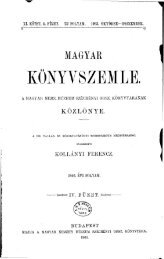
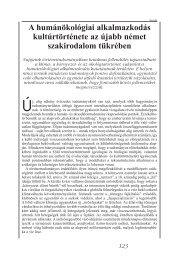

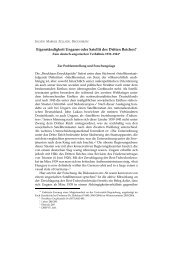
![Letöltés egy fájlban [36.8 MB - PDF] - EPA](https://img.yumpu.com/23369116/1/172x260/letoltes-egy-fajlban-368-mb-pdf-epa.jpg?quality=85)
